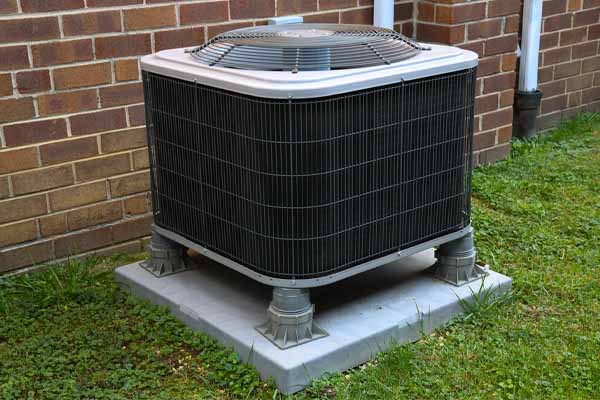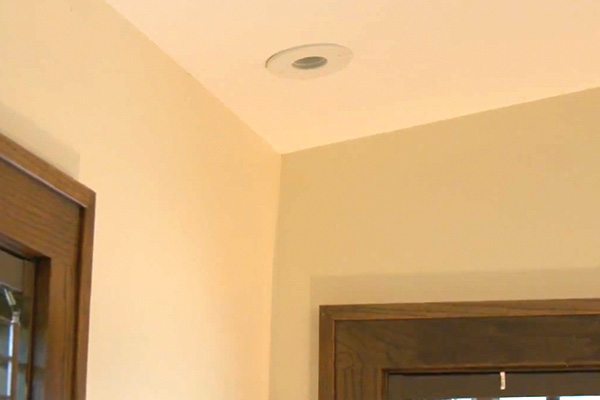High-Velocity Mini Duct Air Conditioning System: What You Need To Know

The HVAC industry is always making progress in efficiency and comfort. One modern unit that is becoming popular is the innovative high-velocity mini-duct HVAC system. This highly efficient unit offers both heating and cooling. This article discusses what you need to know about this modern system, including how it operates and its advantages and disadvantages.
What Kind Of HVAC System Is A High-Velocity Mini Duct Air Conditioning System?
Contents
This high-speed and compact air conditioning system utilizes small, flexible ducts throughout your home for cool air circulation. Traditional HVAC units use large ducts and vents, whereas mini duct systems usually use small ones that are two-three inches in diameter. This is more efficient and has higher air pressure, like a car’s turbocharger.
These small ducts are easily installed on floors, walls, and ceilings. This feature makes them the ideal unit for retrofitting into existing buildings. These systems generate high-velocity airflow to provide cold air efficiently and quickly without needing large ducts.
Moreover, small duct systems are built to be energy efficient as well. They utilize smaller amounts of air for cooling, allowing them to work using less energy than standard HVAC units.
Related Article: How HVAC Comfort Zones Cut Energy Costs
How Does A High-Velocity Mini Duct Air Conditioning System Work?

A high-velocity mini duct air conditioning system works through the use of high-velocity air and small, flexible ducts for cold air distribution throughout a building.
It starts on a small air handler unit that sucks in warm air from inside and pushes it through a heat exchanger to cool it down. The cold air is pushed into mini ducts at high speed, usually around 2,000 feet per minute. As a result, air mixes with the warmer air in the space and creates a uniform temperature.
The system’s mini ducts are typically made of flexible, insulated pipes that are only several inches in diameter. This feature allows them easy installation on ceilings, walls, or floors. The ducts’ small size also lets the system be installed without needing extensive modifications or renovations to the building.
The air can be circulated over long distances and via smaller ducts thanks to the air being delivered at a high velocity. This means that rooms traditional HVAC systems cannot reach can be cooled. In addition, the air’s high velocity assists in eliminating hotspots and drafts so the occupants in the building can enjoy a more comfortable and consistent temperature.
In general, this type of system offers an effective and efficient method of cooling a building, especially in cases where it isn’t practical or effective to use or install traditional HVAC systems.
Related Article: 10 Reasons Why Your AC Unit Isn’t Blowing Cool Air
Pros of a High-Velocity Cooling System

Listed below are some of the benefits a high-velocity mini-duct air conditioning system can bring.
- Easy installation: The ducts in these systems are small and flexible, allowing them to be installed easily and quickly in existing structures. There is also no need for extensive renovations or modifications.
- Consistent temperature: These systems deliver air at high velocity, which helps remove drafts and hotpots. This way, the occupants can enjoy a more comfortable and constant temperature throughout the building.
- Energy efficiency: High-velocity systems consume less energy than standard HVAC systems. This is due to the smaller ducts and less amount of air this kind of system uses to reach the same cooling effect. This helps you achieve reduced energy bills as time passes.
- Space-saving: The ducts these systems have are small in size, meaning they can be installed in tight or out-of-sight spaces. This feature makes them the ideal unit for structures with limited space.
- Quiet operation: These systems offer quieter operations than conventional HVAC units due to the small, high-velocity ducts producing less noise.
- Improved air quality: These systems utilize smaller ducts, making them less likely to have leaks and experience other issues that can negatively impact the air quality. This advantage may be significant for individuals with allergies or respiratory problems.
This type of system is a great choice for people looking for an easy-to-install, effective, and efficient cooling system that is customizable to a wide selection of building types and sizes.
Related Article: Tips on How to Protect Your HVAC Warranty
Cons Of A High-Velocity Mini Duct Air Conditioner
This kind of HVAC unit may have a lot of pros, but it also comes with some potential cons that need to be considered:
- Cost: A high-speed HVAC unit may cost more upfront than traditional HVAC systems. This may be because it is specialized equipment with certain installation requirements.
- Maintenance: These systems must receive regular maintenance to ensure the small ducts are clean and clog-free. This task may be harder and more time-consuming than traditional HVAC unit maintenance.
- Noise: High-flow air conditioning systems are usually quieter than standard HVAC units. However, they can still emit some noise because of the air’s high velocity as it flows through the small ducts.
- Limited capacity: They may not be suitable for larger structures because they may not be able to deliver enough cold air to meet the demand.
- Installation requirements: These systems use small ducts that make it easier to install them in existing buildings. However, careful planning and installation are required to ensure they work efficiently and effectively.
- Aesthetics: The small vents that turbocharged tiny duct systems use may not be as visually appealing as the ones traditional HVAC systems use. This may be a concern in several settings.
Some buildings may find high-performance high-velocity HVAC systems to be an excellent option. Still, it is vital that you consider the possible cons and pros before deciding if this kind of system is the right choice.
Related Article: Key Differences Between HEPA & MERV Filters
Conclusion
To summarize, a high-velocity mini duct HVAC system is an innovative piece of equipment that provides a lot of benefits, such as noise reduction, energy efficiency, better air quality, and even cooling and heating. You should also consider several disadvantages, like the installation cost and needing regular maintenance.
The decision to install a high-velocity mini duct system ultimately rests on the homeowner’s specific requirements and preferences. Homeowners should talk to their local, trusted HVAC technician to find out if this type of system is suitable for their home.
Related Article: How Can UV Lights Improve Your HVAC System?
Get in Touch with Lawes Company For All Your HVAC Needs

Lawes Company is the leading provider of heating and cooling services in Monmouth and Ocean Counties, New Jersey. We have highly skilled and certified technicians specializing in HVAC tune-ups, replacements, installations, and repairs. We are proud to offer top-quality services to all our clients.
At Lawes Company, we understand how important it is to have an energy-efficient and comfortable home. Hence, we offer competitive pricing for all our services. We designed our maintenance services to improve comfort and reduce energy bills. If you need an HVAC repair or replacement, our knowledgeable technicians can suggest the best solution with your budget in mind. We provide satisfaction guarantees on all our work.
Simply call us to schedule a service appointment today. We offer free, in-home estimates so you can make informed decisions about your HVAC systems. Trust Lawes Company to provide you with exceptional HVAC services that will exceed your expectations!
Contact us now at (732) 741-6300 to find out more! Click the link to view our service area.